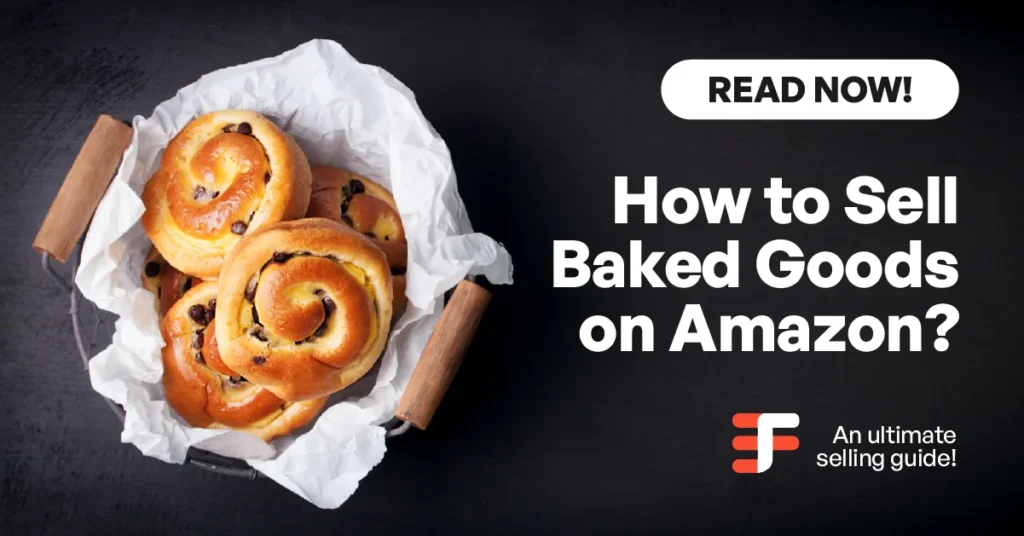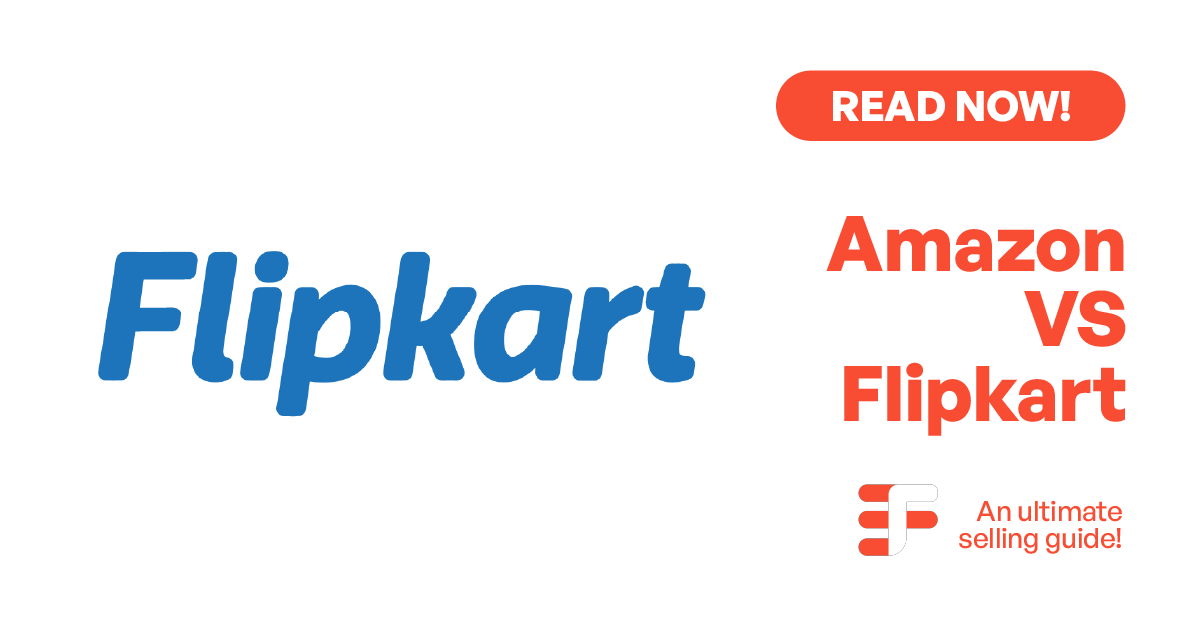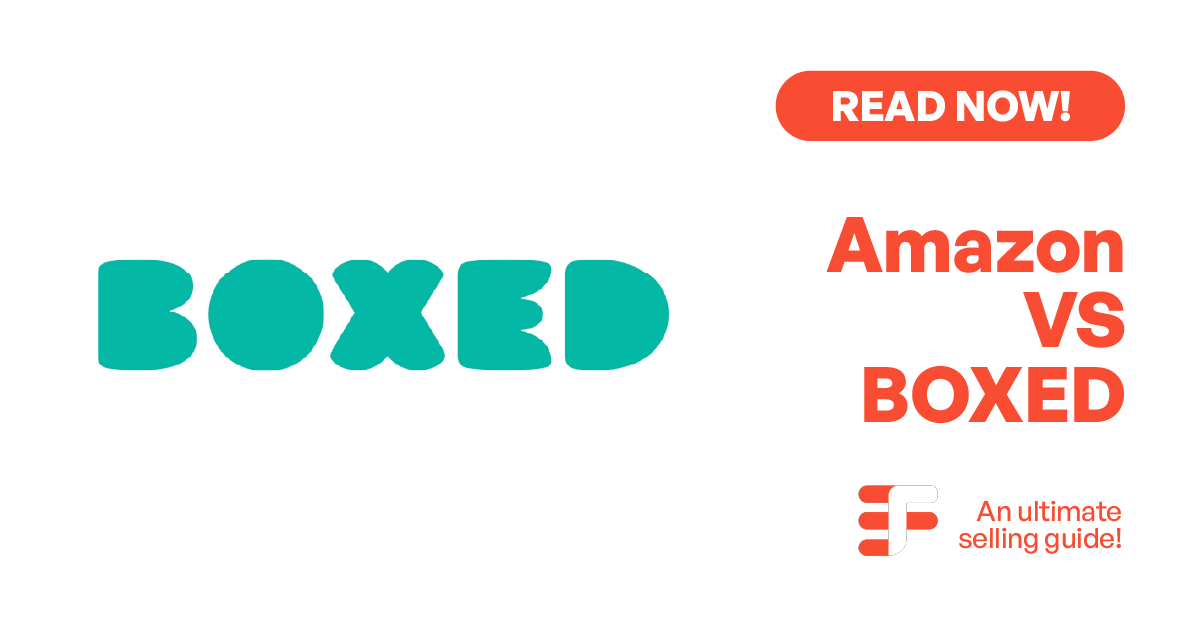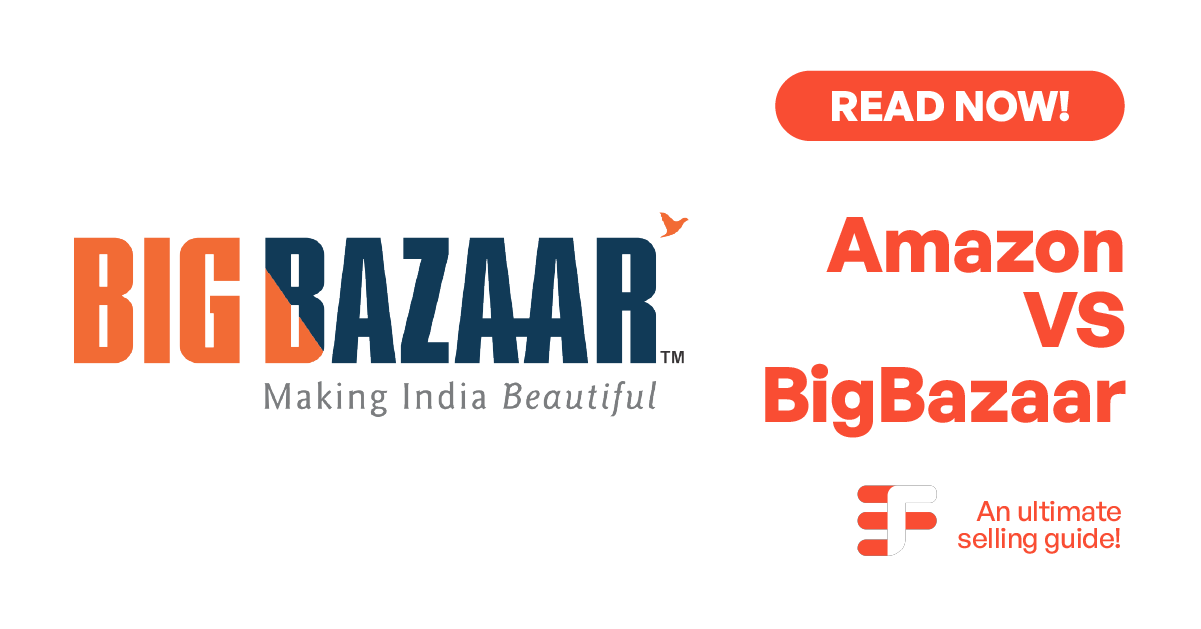Table of Contents
TogglePotential Of Selling Baked Goods on Amazon
The Us Demand for Bakery Items Valued USD 72.5 Billion in 2022 and expected to grow with rate of USD 86.28 Billion in 2030. This growth is influenced by trends toward healthier eating and convenient food options.
There is a strong demand for specialty baked goods, including gluten-free, vegan, and artisanal products. Consumers are increasingly looking for high-quality, innovative offerings, which presents opportunities for niche brands.
E-commerce is rapidly growing within the food and beverage sector, particularly for baked goods. Amazon is a key player, as it offers extensive reach and convenience for both sellers and buyers. In 2024, it is expected that e-commerce sales of food and beverage products will continue to grow, capturing a larger share of total retail sales.
While specific figures for baked goods sold on Amazon are harder to come by, the overall trend indicates a significant portion of food sales is moving online. Baked goods, particularly those that are unique or cater to specific dietary needs, perform well on platforms like Amazon.
Selling on Amazon allows bakers to reach a national audience without the overhead costs associated with brick-and-mortar stores. With the right marketing strategies and product differentiation, small businesses can thrive in the competitive landscape.
What Kind Baked Goods Do You Sell on Amazon
Selling baked goods on Amazon opens a world of possibilities, allowing bakers to reach a broader audience. Here’s a breakdown of popular categories that can be successful on the platform:
Artisanal Bread
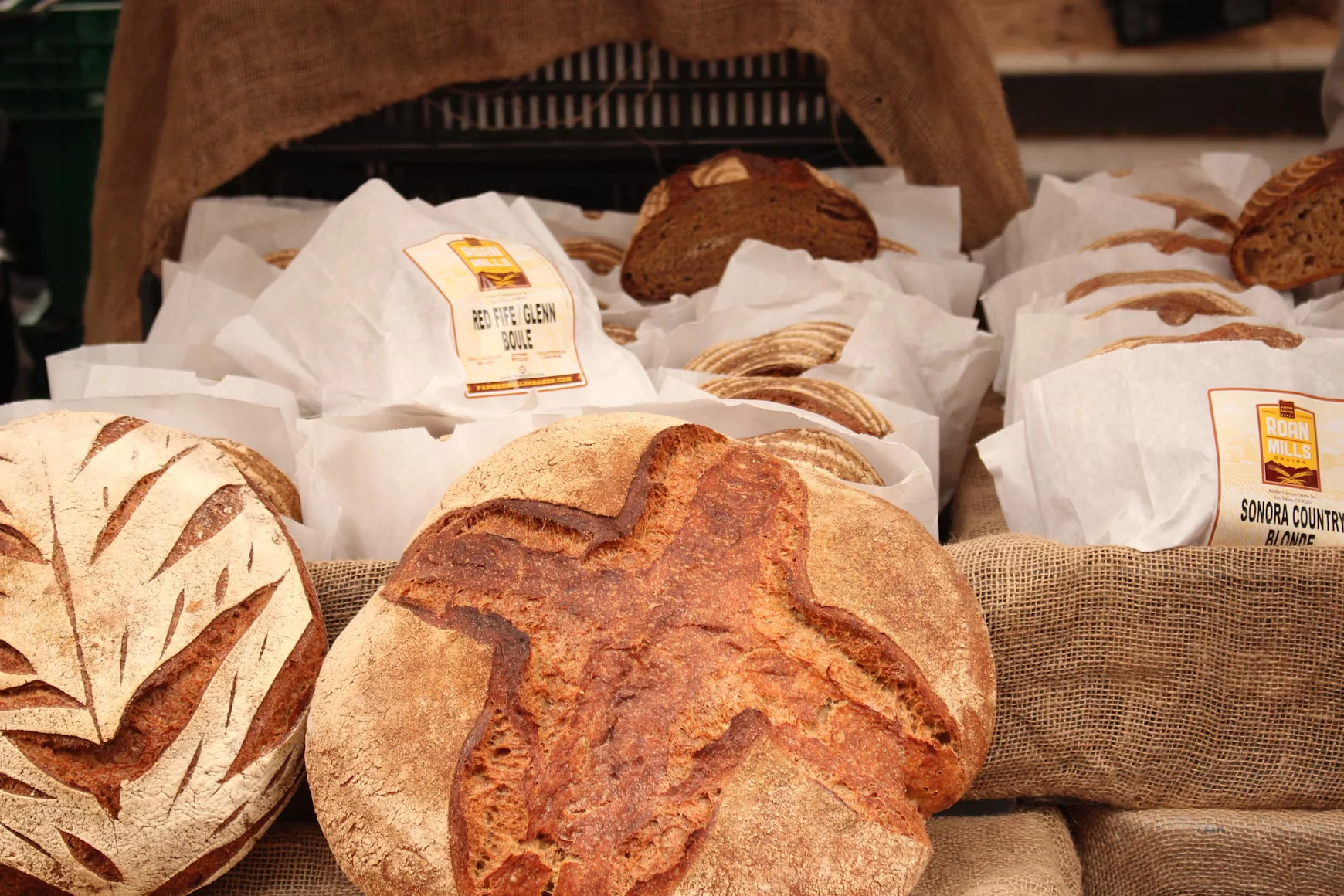
Sourdough, whole grain, and specialty breads are highly sought after. Many consumers are willing to pay a premium for handcrafted, organic, or gluten-free options.
- Cost to Produce: $2.00 per loaf
- Profit: $3.00
- Example: Organic whole grain sourdough loaf
Cookies and Brownies
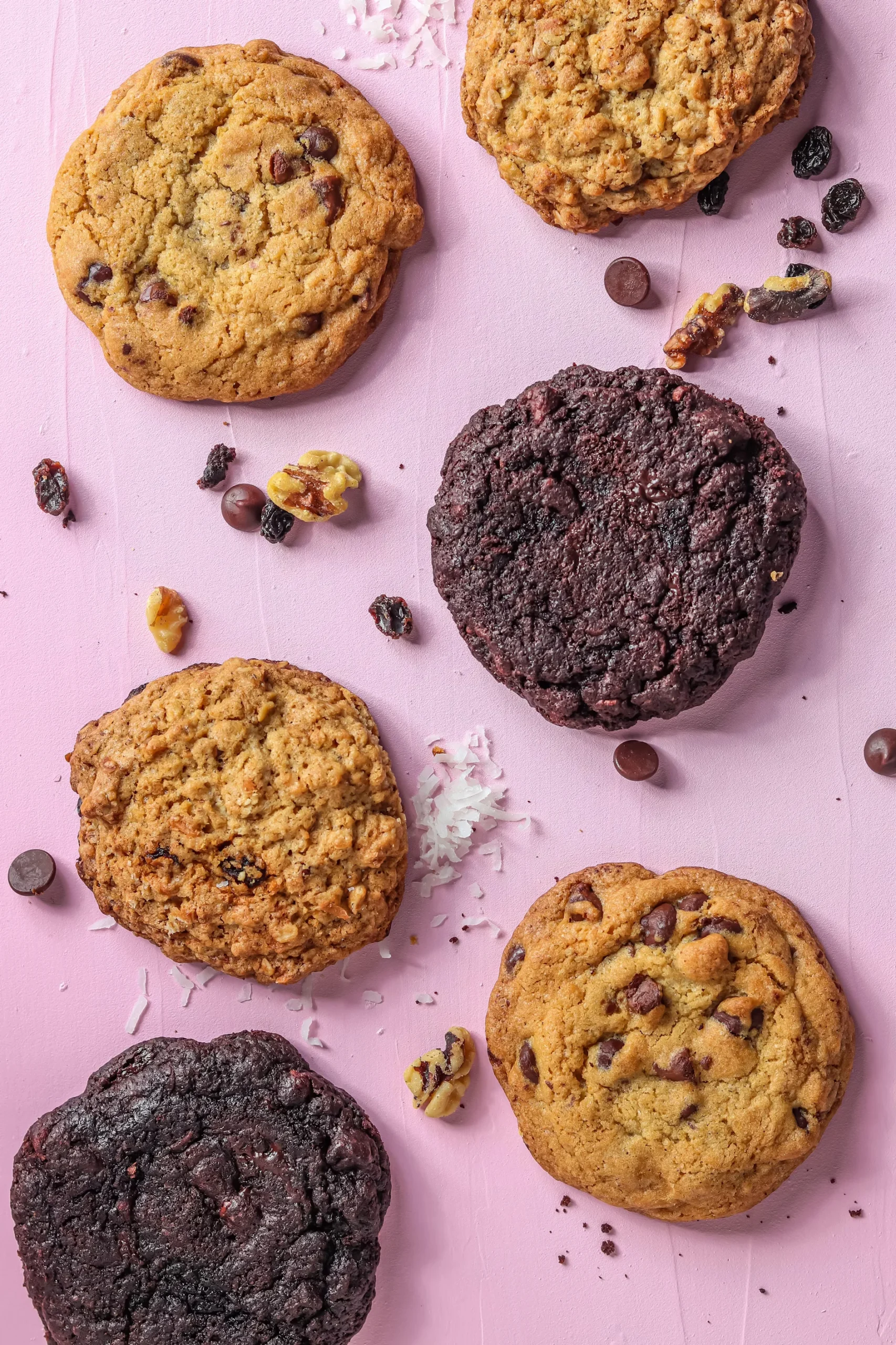
Classic cookies, gourmet varieties, and brownies are perennial favorites. Unique flavors such as salted caramel, matcha, or vegan options can help distinguish your products.
- Cost to Produce: $0.50 per cookie
- Profit: $1.50
- Example: Matcha green tea cookies
Cakes and Cupcakes

Offering pre-packaged cakes or cupcakes in various flavors, including gluten-free and vegan, can attract a wide customer base. Seasonal and occasion-themed cakes also perform well.
- Cost to Produce: $5.00 per cupcake
- Profit: $5.00
- Example: Red velvet cupcake with cream cheese frosting
Pastries and Tarts
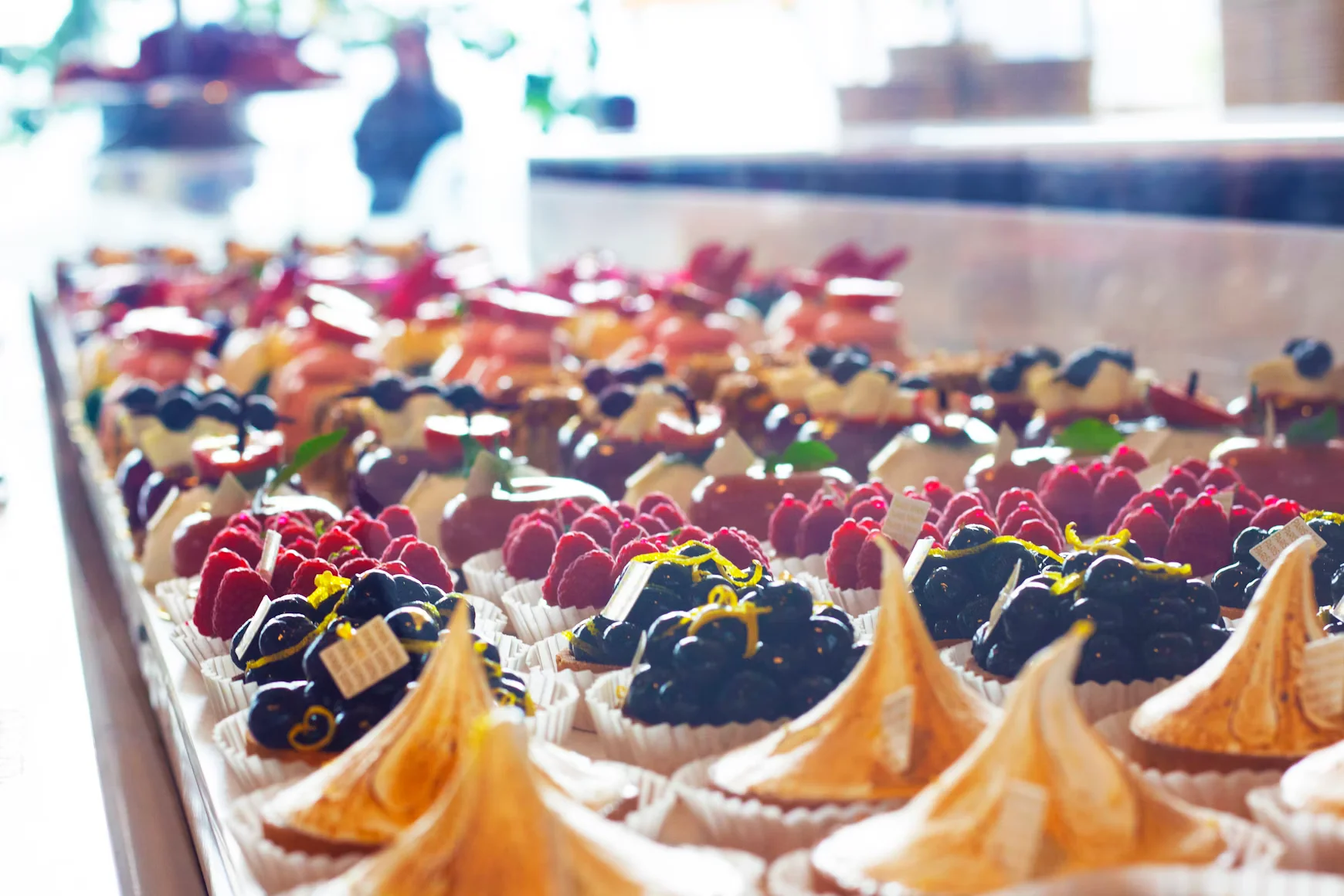
Croissants, Danish pastries, and fruit tarts appeal to those looking for a more indulgent treat. Consider offering unique fillings or toppings to stand out.
- Cost to Produce: $1.50 per pastry
- Profit: $2.50
- Example: Almond croissant with a chocolate filling
Snack Bars and Energy Bites

Health-conscious consumers often seek nutritious snacks. Selling homemade energy bars or protein bites can cater to this growing market segment.
- Cost to Produce: $0.75 per bar
- Profit: $2.25
- Example: Almond butter protein bites
Specialty Items
Gluten-free, keto-friendly, and vegan baked goods are increasingly popular. Catering to specific dietary needs can attract a dedicated customer base.
- Cost to Produce: $1.00 per item
- Profit: $3.00
- Example: Vegan chocolate chip cookies
Seasonal and Holiday Treats
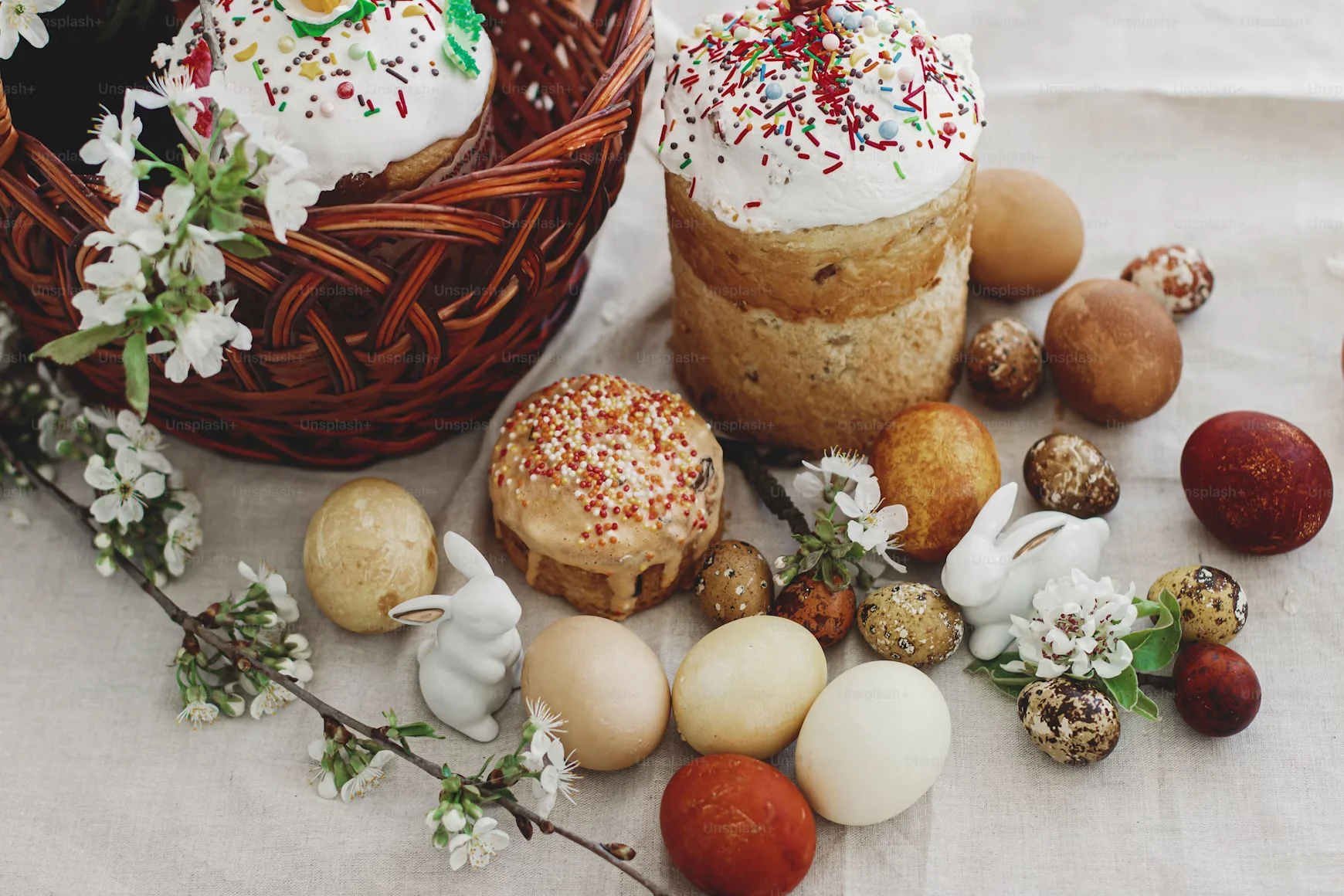
Capitalizing on holidays with themed baked goods, such as pumpkin spice muffins for fall or gingerbread cookies for Christmas, can significantly boost sales.
- Cost to Produce: $1.00 per treat
- Profit: $2.00
- Example: Pumpkin spice muffins during autumn
Preparing Your Baked Goods and Maintaining Shelf Life
When selling baked goods, ensuring freshness and extending shelf life are crucial for customer satisfaction and profitability. Here are essential steps for preparation and preservation:
- Use Quality Ingredients: Start with high-quality, fresh ingredients. Organic and natural products often have better flavor and fewer preservatives, contributing to a more appealing final product. Ingredients like butter, flour, and eggs should be stored correctly to maintain their quality.
- Proper Baking Techniques: Follow precise baking times and temperatures for optimal results. Underbaking can lead to a soggy texture, while overbaking may dry out the product. Regularly calibrate your oven to ensure consistent baking.
- Cooling and Storage: After baking, allow goods to cool completely on wire racks to prevent moisture buildup. Once cooled, store baked items in airtight containers or vacuum-sealed packaging to minimize air exposure, which can cause staleness.
- Utilize Preservatives Wisely: Natural preservatives, such as honey, vinegar, or certain spices, can enhance flavor while extending shelf life. For longer-lasting products, consider incorporating preservatives like citric acid or calcium propionate, but ensure they comply with food safety regulations.
- Freeze for Freshness: Freezing is an effective method for maintaining the quality of baked goods. Wrap items tightly in plastic wrap or aluminum foil and place them in airtight containers before freezing. This method helps preserve texture and flavor, allowing for extended shelf life.
- Labeling and Expiration Dates: Clearly label your baked goods with ingredients and expiration dates. This not only provides transparency for customers but also helps manage inventory effectively.
Meeting Amazon’s Food Safety Requirements for Baked Goods
Selling baked goods on Amazon requires compliance with stringent food safety regulations to ensure product quality and consumer safety. Here’s how to meet these requirements effectively:
- Understand FDA Regulations: Familiarize yourself with the U.S. Food and Drug Administration (FDA) regulations concerning food labeling, packaging, and safety. This includes adhering to guidelines for ingredient listings, allergen disclosures, and nutritional facts. Proper labeling helps consumers make informed choices and avoids potential health risks.
- Obtain Necessary Certifications: Depending on your state and local regulations, you may need to acquire food handler’s permits or certifications such as the ServSafe Food Handler Certification. These demonstrate your commitment to food safety and can enhance customer trust.
- Maintain a Clean Production Environment: Ensure that your kitchen and production area are clean and sanitized. This includes regular cleaning of surfaces, utensils, and equipment to prevent cross-contamination. Implement strict hygiene practices for all personnel involved in the baking process.
- Implement Safe Packaging Practices: Use food-safe packaging materials that protect baked goods from contamination and spoilage. Vacuum-sealing or using tamper-proof containers can further enhance safety and freshness during shipping.
- Monitor Shelf Life: Conduct shelf-life testing to determine how long your baked goods can be stored without compromising quality. This information will guide proper labeling and inventory management on Amazon.
- Stay Updated: Regularly review Amazon’s food safety guidelines and policies, as they may evolve over time. Staying informed will help you maintain compliance and avoid potential issues.
Approve & Setting Up Your Baked Goods Account on Amazon

To sell baked goods in the “Grocery & Gourmet Foods” category, you need to obtain approval from Amazon, as this category is gated. Ensuring your products comply with Amazon’s safety and quality standards is essential. This involves proper packaging, accurate labeling, and adherence to food safety regulations.
- Review Amazon’s Approval Policies: Before starting, familiarize yourself with Amazon’s policies for selling food products, including baked goods. You can find detailed information on their Amazon Selling Policies page, which outlines requirements for food safety, labeling, and more.
- Create a Professional Seller Account: Go to the Amazon Seller Central website and sign up for a Professional Seller account. This account type is recommended for those planning to sell in bulk, as it offers advanced selling tools and features.
- Submit Required Documentation: During the application process, you’ll need to provide documentation, including:
- Business license and registration
- Food handler’s permits or certifications
- Health department permits, if applicable
- Proof of insurance (if required)
- Complete the Product Approval Process: After submitting your application, you must wait for Amazon to review your request. This may take a few days. They may ask for additional information or documentation to ensure compliance with food safety regulations.
- Set Up Your Listings: Once approved, create product listings that include high-quality images, detailed descriptions, and clear labeling information, including ingredients and allergen warnings.
- Maintain Compliance: Regularly review Amazon’s policies and guidelines to ensure ongoing compliance with food safety standards. This includes updating listings and handling customer feedback effectively.
Navigating If Amazon’s FBA Is Right for Your Baked Goods Items

Evaluating whether Amazon’s Fulfillment by Amazon (FBA) is a good fit for your brand involves several crucial considerations. Here’s a breakdown of key factors to help guide your decision:
- Cost Evaluation
FBA fees, which include storage and fulfillment, can impact your profit margins. Typical fulfillment fees range from $2.50 to $5.00 per unit, with storage fees around $0.75 per cubic foot. Weigh these costs against the potential sales boost to see if the investment makes sense.
- Shipping and Logistics
With FBA, Amazon takes care of storage, shipping, and customer service. For brands, fast delivery is vital due to the product’s freshness. Amazon’s expansive logistics can ensure quick delivery, improving customer satisfaction.
- Boost in Visibility and Credibility
FBA can improve your product’s visibility by making it eligible for “Prime” and potentially “Amazon’s Choice” labels, increasing customer trust and sales.
- Managing Inventory
Effective inventory control is crucial with FBA, especially for baked goods . Balancing stock levels and minimizing storage fees is key, particularly during seasonal demand shifts.
- Customer Support and Returns
Amazon handles customer service and returns, reducing your workload. However, it’s important to maintain product quality to prevent high return rates, which can hurt your seller reputation.
- Brand Control
FBA supports logistics but may limit direct customer interaction. If building a direct relationship with your customers is important, consider using FBA alongside your own sales channels.
Comparison Table: FBA vs. FBM for Baked Goods
|
Feature |
FBA (Fulfillment by Amazon) |
FBM (Fulfillment by Merchant) |
|
Storage |
Amazon stores your products in their warehouses |
You store your products at your own location |
|
Shipping |
Amazon handles shipping directly to customers |
You are responsible for packing and shipping |
|
Customer Service |
Amazon provides 24/7 customer service |
You handle all customer inquiries and issues |
|
Prime Eligibility |
Products are automatically eligible for Amazon Prime |
Products are not automatically Prime eligible |
|
Fees |
Higher fees for storage and fulfillment |
Lower fees, but variable shipping costs |
|
Control |
Less control over shipping methods and inventory |
Full control over inventory management and shipping |
|
Scalability |
Easier to scale with Amazon’s resources |
More effort required to scale operations |
|
Returns Handling |
Amazon manages returns for you |
You handle returns directly |
Making the Decision
Choosing FBA or FBM for your baked goods business on Amazon will largely depend on your specific circumstances:
- If you expect high sales volume and want to leverage Amazon’s logistics network, FBA may be the right choice.
- If you want greater control over your shipping and handling, or if your products have unique storage requirements, FBM might be better suited.
Do Amazon Marketing or Hire an Amazon Consultant

Deciding whether to manage Amazon marketing in-house or hire an Amazon consultant involves several key considerations. Consultants bring specialized knowledge and experience in Amazon’s advertising ecosystem, enabling them to optimize campaigns more effectively than an internal team that may lack proper training. Moreover, managing Amazon marketing internally can be time-consuming; a consultant can take over these tasks, allowing your team to focus on core business activities and strategies.
While hiring a consultant may seem like an additional expense, it can lead to higher sales and better ROI, ultimately offsetting the initial cost through increased revenue. Additionally, as your business grows, managing Amazon marketing can become increasingly complex, making it essential to have scalable strategies in place.
Hire Ecomfleet to Skyrocket your Amazon sales
If you are unsure where to start or need expert help, consider reaching out to Ecomfleet. Our experienced consultants can help your coffee brand thrive in a competitive market. Let us handle the details so you can enjoy the rewards of your hard work.
Tracking Sales and Analyzing Performance
Tracking sales and analyzing performance are crucial components of any successful business strategy. By monitoring sales metrics, businesses can gain insights into customer behavior, identify trends, and make informed decisions to enhance their offerings. Analyzing performance goes beyond simply looking at numbers.
It involves evaluating various key performance indicators (KPIs) such as conversion rates, average order value, and customer acquisition costs. This comprehensive analysis helps businesses understand what strategies are working and which areas need improvement.
Moreover, leveraging analytics tools can provide deeper insights into customer preferences and buying patterns, enabling companies to tailor their marketing efforts more effectively. Regularly tracking sales and performance metrics not only aids in identifying successful tactics but also helps in forecasting future Using social media to Build Awareness for Your Baked Goods
Using social media to build awareness for your baked goods can significantly enhance your brand visibility and customer engagement. Here are some effective strategies:
- Visually Appealing Content: Post high-quality images and videos of your baked goods to showcase their texture and presentation. This not only attracts attention but also entices potential customers.
- Engagement: Interact with your audience by responding to comments and messages promptly. Encourage followers to share their experiences with your products, creating a sense of community.
- Promotions and Giveaways: Run contests or giveaways that require participants to share your posts or tag friends. This can increase your reach and attract new followers.
- Behind-the-Scenes Content: Share the baking process or highlight your ingredients to give customers a glimpse into your passion and dedication, making them feel more connected to your brand.
- Utilize Stories and Reels: Use features like Instagram Stories or Reels to share quick updates, new products, or customer testimonials, keeping your audience engaged and informed.
Getting Your First Customer Reviews
Getting your first customer reviews is a vital step in building credibility and trust for your business. Positive reviews not only enhance your reputation but also influence potential customers’ purchasing decisions. To encourage initial reviews, consider reaching out to your existing customers directly, especially those who have had positive experiences with your product or service.
Send personalized follow-up emails thanking them for their purchase and kindly ask for feedback. Another effective strategy is to incentivize reviews by offering discounts, loyalty points, or exclusive content in exchange for their honest opinions.
Additionally, make the review process as simple as possible by providing clear instructions and links to the review platform. Actively engaging with customers on social media and showcasing their feedback can also motivate others to share their experiences.
Some Top Baked Goods Sellers Or Benchmark Sellers On Amazon
When exploring the top baked goods sellers on Amazon, several brands stand out for their popularity and customer satisfaction. These benchmark sellers showcase a variety of products, from cookies to artisanal bread, appealing to diverse tastes.
King Arthur Baking Company:
Renowned for its high-quality flours and baking mixes, King Arthur offers a range of baked goods that cater to both novice and experienced bakers. Their products are often praised for their consistency and flavor.
Price range: $3 – $8 per product.
Stacy’s Pita Chips:
While primarily known for their pita chips, Stacy’s also offers a line of delicious baked goods, including pita chips in various flavors. Their commitment to quality ingredients has made them a favorite among health-conscious consumers.
Price range: $3 – $4 per bag.
Little Debbie:
This iconic brand is famous for its snack cakes and cookies, including favorites like Swiss Rolls and Oatmeal Creme Pies. Little Debbie’s nostalgic appeal and affordability contribute to its widespread popularity.
Price range: $1 – $4 per box.
Annie’s Homegrown:
Known for its organic and wholesome baked snacks, Annie’s offers items like cookies and crackers that appeal to health-focused shoppers. Their commitment to quality ingredients and sustainability resonates with consumers.
Price range: $3 – $5 per product.
Pepperidge Farm:
Famous for its assorted cookies, including Milano and Chessmen, Pepperidge Farm has built a strong reputation for flavor and texture, making it a staple in many households.
Price range: $3 – $6 per package.
Conclusion
In the competitive landscape of baked goods on Amazon, understanding the top sellers and their strategies can provide valuable insights for both consumers and aspiring bakers. Brands like King Arthur Baking Company, Stacy’s, Little Debbie, Annie’s Homegrown, and Pepperidge Farm have successfully established themselves through quality products, strong branding, and effective marketing strategies.
By analyzing these benchmark sellers, new businesses can learn how to appeal to their target audience, optimize their offerings, and carve out a niche in the market.
Frequently Asked Questions
What types of baked goods sell best on Amazon?
Popular baked goods on Amazon include cookies, snack cakes, bread mixes, and gluten-free options, catering to a wide range of consumer preferences.
How can I improve my baked goods listing on Amazon?
To enhance your listing, use high-quality images, write compelling product descriptions, include keywords for SEO, and encourage customer reviews to build trust.
Are there any health-conscious baked goods available on Amazon?
Yes, many brands offer health-conscious options, including organic, gluten-free, and low-sugar baked goods, appealing to health-focused consumers.
What are the benefits of purchasing baked goods from Amazon?
Purchasing baked goods from Amazon provides convenience, a wide selection of products, often competitive pricing, and the ability to read customer reviews before making a decision.

